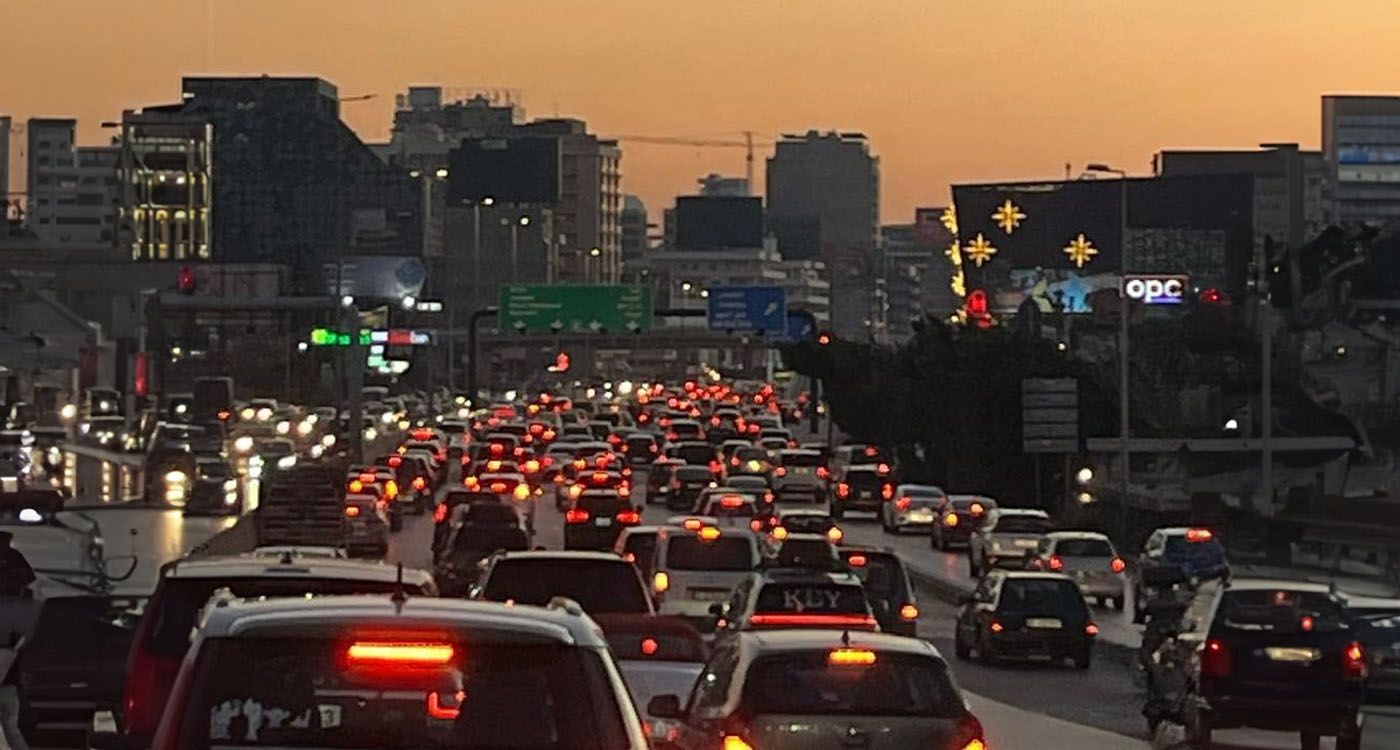
Beirut’s streets are increasingly paralyzed by traffic congestion, making mobility one of the city’s most pressing challenges. To address this crisis, urgent action is needed—modernizing public transportation, optimizing traffic management, and rethinking urban planning to reduce car dependency. These reforms are essential to ensuring a seamless and livable environment for all.
Imagine waking up to a Beirut without endless traffic jams—where buses run on time, pedestrians walk safely on well-designed sidewalks, and cycling is a practical alternative. For now, this vision remains a distant vision. Today, the city is suffocating under relentless congestion, making daily life increasingly difficult for its residents.
Yet, effective solutions exist to ease traffic congestion, enhance public transportation, and rethink urban planning to reduce the overwhelming influx of cars. With the right reforms, Beirut could restore fluid mobility and greatly improve its quality of life.
Immediate Actions Needed
In an interview with This is Beirut, Farah Homsi, senior lecturer at the Department of Civil and Environmental Engineering at Beirut’s École Supérieure d'Ingénieurs (Esib) at Saint Joseph University, highlights the severity of the crisis in the capital and the urgency of implementing needed solutions. “Traffic congestion has become a structural issue that must be addressed without delay,” she warns.
Homsi stresses that modernizing public transportation is key to alleviating congestion. “Reorganizing the bus network, increasing service frequency, and better structuring routes are essential steps to making public transport more accessible and attractive,” she explains.
Homsi also underscores the importance of optimizing traffic management. “Synchronizing traffic lights and redesigning congested intersections are critical steps to improving traffic flow,” she adds.
Another immediate solution is carpooling. Encouraging ride-sharing could significantly reduce the number of vehicles on the road, easing congestion while lowering transportation costs.
Revamping Beirut’s Public Transport
“A reliable, high-frequency bus network with clear and well-structured routes covering the entire city, including its outskirts, is essential,” says Homsi. Such reforms would make public transport far more efficient and accessible.
She also highlights the importance of bus punctuality. “Timetables must be well-defined, and a real-time tracking system should be implemented, allowing passengers to check live departure times,” she explains. This would greatly enhance both flexibility and reliability for commuters.
Cleanliness is another key factor. “Maintaining clean buses and stations is essential to attracting and retaining passengers,” she emphasizes.
Finally, infrastructure modernization—such as accessible stations and digital ticketing—must be prioritized. “Integrating smart technologies for route management and real-time communication would ensure a smoother and more efficient service,” she concludes.
Rethinking Beirut’s Urban Design to Reduce Congestion
Beirut’s unplanned urban expansion—with scarce pedestrian walkways and limited public parking—has fueled car dependency. Homsi explains that “thoughtful urban planning can help break this dependency by improving access to alternative modes of transport.”
A strategic urban plan, with well-designed mixed-use neighborhoods where businesses, services, and residential areas are seamlessly connected, would greatly reduce the need for car travel. As she explains, “Mixed-use districts promote sustainable mobility and significantly ease congestion.”
Properly designing and scaling road infrastructure is also crucial to keeping pace with population growth and evolving traffic patterns. “Infrastructure must be planned with future demands in mind,” emphasizes Homsi.
Additionally, optimizing parking management and reclaiming public spaces for pedestrians and public transport would help alleviate pressure on the roads.
Stalled Reforms
The biggest obstacle to fixing Beirut’s relentless traffic congestion is lack of funding. “Economic instability has made it nearly impossible to allocate the necessary funds for infrastructure projects,” explains Homsi. This financial shortfall has stalled essential investments in public transport and urban planning—both essential for improving mobility.
Another major hurdle is the lack of strategic urban planning. “The absence of a unified approach to urban development prevents the establishment of a truly integrated transport network,” she notes. Without a clear and long-term vision, projects will remain isolated, drastically reducing their effectiveness.
Bureaucracy and resistance to change further hinder much-needed reforms. “Short-term interests and red tape delay the implementation of effective solutions,” she explains. These obstacles slow down the advancement of crucial projects.
Finally, deep-rooted cultural reliance on private cars remains a challenge. “Changing public perception is essential to encourage mass transit adoption,” concludes Homsi. The overwhelming preference for personal vehicles has made it difficult to introduce sustainable alternatives, such as efficient public transport and pedestrian-friendly infrastructure—both of which are vital to reducing congestion.
For Beirut to breathe again, a complete transformation of its transportation and urban landscape is imperative. Now is the time to rethink mobility and shape a city that is efficient, accessible and livable for all.





Comments